The Sisters

Brief Synopsis
Cast & Crew
Anatole Litvak
Errol Flynn
Bette Davis
Anita Louise
Ian Hunter
Donald Crisp
Film Details
Technical Specs

Synopsis
On presidential election night in 1904, Louise, Helen and Grace Elliot, daughters of Silver Bow, Montana pharmacist Ned Elliott, excitedly prepare for the town's ball. Serious Louise, the eldest, plans to marry as soon as Tom Knival, a stodgy but stable young man, asks her. Helen, the prettiest of the sisters, yearns for the romance and excitement of life beyond Silver Bow, and Grace, the youngest, secretly wants Tom. At the ball, as Theodore Roosevelt's election is announced, Tom is about to ask Louise to marry him when Frank Medlin, a restless young sports reporter visiting from San Francisco, asks her to dance. The two fall in love at first sight, and stay out late, to the displeasure of Louise's parents. Frank extends his stay for several days, and at Sunday dinner with the Elliotts, impulsively announces that he and Louise are going to be married. Despite her family's disapproval, Louise and Frank elope to San Francisco that night. Soon Grace marries Tom, to whom she is well suited, and gives birth to a son. Helen also marries, after the wealthy Sam Johnson, father of Helen's friend Stella, proposes, promising to let her go anywhere she wants and not demand love in return. As the months pass, life for Frank and Louise is difficult. Although Louise does not complain about their finances, and encourages Frank to write the novel he has dreamed of, he becomes restless, chafing at his loss of freedom. On the night that Louise plans to tell Frank she is going to have a baby, he comes home drunk and lashes out at her. The next morning, guilt and his love for Louise make him stop drinking and start to work hard, but Louise keeps her pregnancy a secret. Several weeks later, when Louise accompanies Frank on an assignment to cover a boxing match, the smoke and smells of the arena make her ill, forcing her to leave. When Frank goes to her, she tells him about the baby. Delighted, Frank promises to work ever harder and wants to accompany her home, but she insists that he stay to finish his assignment. Climbing several stories to their apartment, Louise collapses and has a miscarriage. Frank is shattered and blames himself. Months later, on Christmas Eve, Frank, who has been drinking heavily, is angry when his friend and fellow sportswriter, Tim Hazelton, criticizes part of Frank's book. Depressed because doctors' bills are overwhelming him and he cannot afford to buy Louise a Christmas gift, Frank goes to his editor and demands a raise. Because of Frank's belligerence, his editor angrily fires him, saying that he is drinking too much and his work is no longer good. Later, at home, Louise surprises Frank with a Christmas tree, furthering his feelings of inadequacy. Louise is understanding when Frank confesses that he was fired, but when she tells him that she has found a job at Benson's department store, his pride is hurt. He forbids her to work, which precipitates a bitter argument that ends when he leaves to get drunk. As the months pass, Frank is unable to find work, while Louise is thriving at her job as secretary to store owner William Benson. In a final attempt to save their love, Louise promises to quit her job, and Frank goes from newspaper to newspaper trying, without success, to find work. Later, Tim finds Frank in a saloon and tells him that he must leave San Francisco and get a fresh start, but when Frank later listens to sailors exchanging stories about life at sea, he decides to hire on to a ship bound for Singapore. That afternoon, Frank goes to see Louise and asks Benson, whom Frank senses is in love with Louise, to take her out for a celebratory dinner after work that night. When Louise arrives home, there is a note from Frank, stating that he is sailing at midnight because their love is dying, and it is his fault. Louise rushes to stop Frank, but a policeman who misunderstands why she is roaming the docks arrests her. By the time Louise is released, it is two in the morning. A few hours later, a tremendous earthquake shakes San Francisco, destroying her apartment. Her friend Flora, a floozy who lives across the hall, goes to her during the quake, then gives Louise her mother's address in Oakland, and invites her to stay. As news of the earthquake is telegraphed around the world, and there is no word from Louise, Ned travels to San Francisco to find her. Louise does not want to leave her apartment, but soldiers force her to evacuate so that they can dynamite her street in an effort to stop the fires raging through the city. Exhausted and feverish, Louise makes her way to Oakland, where Flora and her mother, a kindly madam, take care of her. Meanwhile, when Frank's ship receives a wireless message about the quake, he becomes hysterical and tries to jump overboard after the captain refuses to heed the maritime order to return to San Francisco. Days later, Benson discovers where Louise is, and, with Ned, takes her back to San Francisco. Within two years, Benson's department store, like most of San Francisco, has been rebuilt. Louise now has her own secretary, and is a confident of Benson. When Louise receives word from Grace that Tom has been unfaithful with Mrs. Taylor, a notorious woman in town, Louise returns for a visit Silver Bow, and wires Helen to return as well. Back home, Louise convinces Grace to give Tom another chance. Then, with her sisters, convinces other men who have had liaisons with Mrs. Taylor, to force the woman to leave town. Meanwhile, in San Francisco, Tim, who has received a letter from Frank revealing that he had not found what he was looking for, meets him when his ship docks. Weak and ill, Frank goes with Tim to Benson's to see Louise. Learning that she has gone to Silver Bow, Frank and Tim decide to follow her. Benson also travels to Silver Bow, arriving before them. It is now election night, 1908, and the Elliotts again prepare for the election night ball. Helen's new fiancé, Englishman Anthony Bittick, joins them, as does Tom, Helen and Benson. At the ball, Frank, who is sober but weak, watches Louise from the mezzanine and asks Tim to go to her first. He does, and when Frank overhears Louise tell Tim that if Frank ever returned she would love him on his terms, Frank, chastened, goes to her and they pledge to begin again.

Director

Anatole Litvak
Cast

Errol Flynn

Bette Davis

Anita Louise
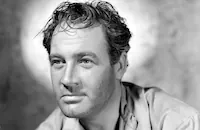
Ian Hunter
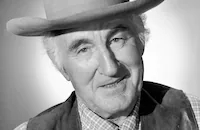
Donald Crisp

Beulah Bondi

Jane Bryan

Alan Hale

Dick Foran

Henry Travers
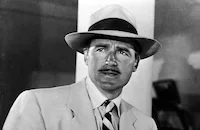
Patric Knowles
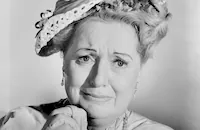
Lee Patrick

Laura Hope Crews
Janet Shaw
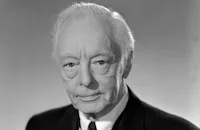
Harry Davenport
Ruth Garland
John Warburton

Paul Harvey

Mayo Methot

Irving Bacon
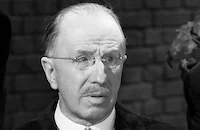
Arthur Hoyt
Stanley Fields

Larry Williams
Dudley Dickerson
Eddie Brian
Jessie Perry
Mildred Gover
Loia Cheaney

Lee Phelps
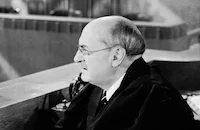
Granville Bates
Bob Perry
Ed Stanley
Robert Homans
Stuart Holmes
Glen Cavender
Russell Simpson
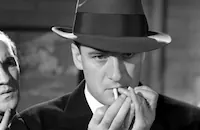
Elliott Sullivan

Frank Otto
John Kelly
Monte Vandergrift

Jack Mower

Frank Puglia

Rosella Towne

Susan Hayward
Paulette Evans
Frances Morris
Edgar Edwards
Jan Holm
Charles Sullivan
Frank Meredith

Joseph Crehan
Vera Lewis
Lottie Williams
John Harron
Bessie Wade
Lew Harvey
Harry Semels
Jang Lim
Peggy Moran
Richard Bond
Mira Mckinney
Georgie Cooper
Crew
Margaret Donovan
Julius J. Epstein
Leo F. Forbstein
Tony Gaudio
Glen Harris
Milton Krims
David Lewis
Anatole Litvak
Warren Low
Orry-kelly
Pat Patterson
William Phillips
Irving Rapper
C. A. Riggs
Bert Six
Max Steiner
Jack Sullivan
Jack L. Warner
Carl Jules Weyl

Film Details
Technical Specs

Articles
The Sisters
Davis wrapped filming of Jezebel in January of 1938. The film would be released in March to rave reviews (Davis would go on to win her second Oscar® for her role as the tempestuous Southern belle). After completing Jezebel, she asked for leave from the studio. She'd been working non-stop and her father had just died. Davis needed time to recover. During these months, the studio sent her two scripts, Comet Over Broadway and Garden of the Moon, which were intended to be her next projects. Davis declined both films and Warners put her on suspension. It seems both sides had a point to make. The studio was, according to the order of the day, in charge. They assigned the roles. And Davis felt, considering her track record, that she should be given more freedom in selecting her roles. It wasn't the first Davis-WB tangle. In 1936, she'd refused a role and defiantly fled to England. The studio sued for breach of contract. On this second time around, however, her suspension didn't require legal action. Davis read the script for The Sisters and agreed to make the film. She later commented on this decision, saying, "I was delighted with this part because it was a change of pace. My ambition always has been...for variety in the kinds of parts I play. My career has proved this. I was always challenged by a new type of person to play."
But the fights weren't over between Davis and the studio. She refused to stand for official billing for The Sisters; one that called for Flynn to be billed above the title with her name falling below it. As Davis later explained it, "at that time I had no billing clause in my contract. I felt after Jezebel that my name should always appear above the title. That is star billing. Warner Bros. decided to bill Errol Flynn as the sole star...my name far below the title." Aside from simple star vanity, Davis felt the proposed "Errol Flynn in The Sisters" sent a mixed message to the moviegoer, not to mention that the film was really geared toward female audiences. Flynn was paid twice as much as Davis for The Sisters - $4500 a week to her $2250. But Davis would get her way with billing ¿ it would read "Errol Flynn and Bette Davis in The Sisters." The film's producer, Hal B. Wallis, would later admit in an interview that the whole billing dispute had really been the studio's way of keeping Davis in check. Warners knew it had a big hit on its hands with Jezebel. And as Wallis put it, "their business instincts would have dictated their giving her that top billing before the picture went out to theaters, but meanwhile they enjoyed giving her a dose of her own medicine."
Davis would go on to make a string of pictures following The Sisters that would confirm her star status. Dark Victory, Juarez, The Old Maid and The Private Lives of Elizabeth and Essex would all be moneymakers in 1939. And of course winning that second Oscar® for Jezebel didn't hurt Davis' Hollywood clout.
Other points of interest in The Sisters include director Anatole Litvak who had previously helmed two at Warner Bros. (Tovarich (1937) and The Amazing Dr. Clitterhouse (1938)). Litvak refused to allow Davis a double for the San Francisco earthquake scenes. The sequence, which would take up just two and a half minutes of screen time, would also include stock footage from Old San Francisco (1927). Future Davis collaborator Irving Rapper also had a hand in The Sisters - as dialogue coach. Rapper would go on to direct Davis in two very successful films, Now, Voyager (1942) and The Corn Is Green (1945). Also of note: Susan Hayward appears in only her second film as a telephone operator (we only see her from the back). And half of the "Battling Bogarts," Mayo Methot (AKA the third Mrs. Humphrey Bogart), makes an appearance as a blonde at the boxing match.
Producer/Director: Anatole Litvak
Screenplay: Milton Krims, Myron Brinig
Cinematography: Tony Gaudio
Film Editing: Warren Low
Art Direction: Carl Jules Weyl
Music: Max Steiner
Costume Design: Orry-Kelly
Cast: Bette Davis (Louise Elliott), Errol Flynn (Frank Medlin), Anita Louise (Helen Elliott), Ian Hunter (William Benson), Donald Crisp (Tim Hazelton), Beulah Bondi (Rose Elliott), Jane Bryan (Grace Elliott Knivel), Alan Hale (Sam Johnson), Dick Foran (Tom Knivel).
BW-99m. Closed captioning.
by Stephanie Thames

The Sisters
Quotes
Trivia
In the novel on which the film was based, the character of Louise Elliott ends up marrying a different man in the denouement.
Stock footage from the movie Old San Francisco (1927) was used in the movie.
Originally the film credits were to read "Errol Flynn in The Sisters", but Bette Davis demanded equal billing alongside 'Errol Flynn' . She also pointed out the original credits had an unwelcome sexual connotation.
Notes
As the film opens, the first page of Myron Brinig's novel is shown onscreen for several seconds, enabling the audience to read part of the page that sets the time and place of the story and introduces the main characters. At several other points within the film, and at the end, the device is used again to establish the passage of time, as well as changes within the characters' lives.
According to the Warner Bros. production files, director William Dieterle turned down the film, Irene Dunne was the studio's first choice to play Louise, and Fredric March was approached to play Frank. Two endings were shot for the film: in one, Louise marries her boss, William Benson (the novel's ending), and in the other, Louise and Frank are reconciled. Preview audiences preferred the second ending, according to the files.
Hollywood Reporter noted that Warner Bros. built $200,000 worth of special sets to be razed and burned during the filming of the San Francisco earthquake scene. In addition, Hollywood Reporter claimed that three weeks were required to film the sequence. The film used stock footage from Warner Bros. 1927 film Old San Francisco (see AFI Catalog of Feature Films, 1921-30). Modern sources indicate that the property was originally purchased for Kay Francis, that Ginger Rogers was considered for the lead, and that Franchot Tone and George Brent were also suggested as stars. Another film made during the 1930s in which the 1906 San Francisco earthquake was featured prominently was the 1936 M-G-M production San Francisco, directed by W. S. Van Dyke, and starring Clark Gable, Spencer Tracy and Jeanette MacDonald..















